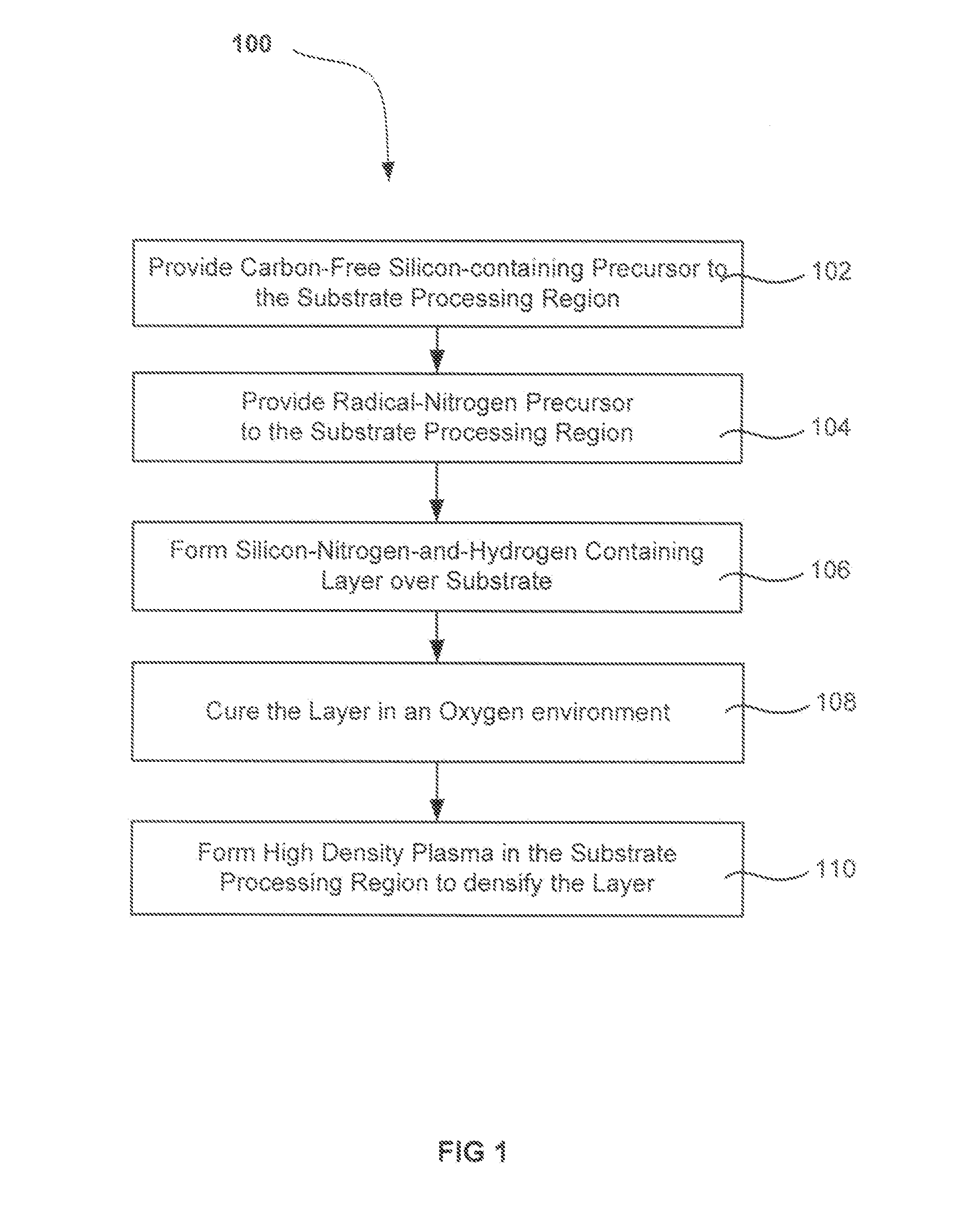Densification for flowable films
a flowable film and density technology, applied in the direction of electric discharge tubes, coatings, chemical vapor deposition coatings, etc., can solve the problems of dielectric material, dielectric material, dielectric material, structural features of the device having decreased spatial dimensions, etc., to increase the etch tolerance of the processed layer
- Summary
- Abstract
- Description
- Claims
- Application Information
AI Technical Summary
Benefits of technology
Problems solved by technology
Method used
Image
Examples
Embodiment Construction
[0017]A method of forming a dielectric layer is described. The method first deposits an initially-flowable layer on a substrate. The initially-flowable layer is then densified by exposing the substrate to a high-density plasma (HDP). Essentially no additional material is deposited on the initially-flowable layer, in embodiments, but the impact of the accelerated ionic species serves to condense the layer and increase the etch tolerance of the processed layer.
[0018]Post-processing an initially-flowable dielectric layer with a high density plasma has been found to dramatically densify and reduce the wet etch rate of the processed dielectric layer. The flowable layer may be deposited by a process such as spin-on glass (SOG) spin-on dielectric (SOD), an eHARP process (H2O-TEOS-O3), SACVD or a flowable CVD process such as radical-component CVD. Flowable films can have a reduced density and elevated etch rate compared to non-flowable films. The high density plasma treatments described her...
PUM
| Property | Measurement | Unit |
|---|---|---|
| Temperature | aaaaa | aaaaa |
| Power | aaaaa | aaaaa |
| Thickness | aaaaa | aaaaa |
Abstract
Description
Claims
Application Information
 Login to View More
Login to View More - R&D
- Intellectual Property
- Life Sciences
- Materials
- Tech Scout
- Unparalleled Data Quality
- Higher Quality Content
- 60% Fewer Hallucinations
Browse by: Latest US Patents, China's latest patents, Technical Efficacy Thesaurus, Application Domain, Technology Topic, Popular Technical Reports.
© 2025 PatSnap. All rights reserved.Legal|Privacy policy|Modern Slavery Act Transparency Statement|Sitemap|About US| Contact US: help@patsnap.com



